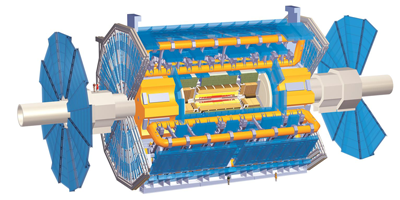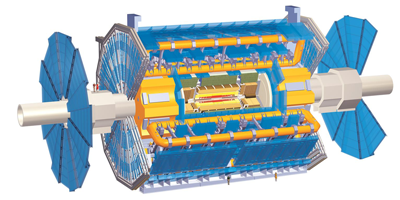Using Topspin to Probe the Standard Model
The top quark, because it is the most massive, provides a unique window into high-energy physics. For one thing, its decay releases energy that could uncover exotic processes that would otherwise be inaccessible. In addition, this decay is so fast, a fraction of a yoctosecond , that there is not enough time for the strong interaction to create more quarks that would obscure the original properties of the bare top quark. In Physical Review Letters, researchers analyze the decay of top quark-antiquark pairs from the ATLAS detector at the Large Hadron Collider to look for gaps in the standard model for particle physics. They found no gaps.
The researchers looked at decays in which the top quark and its antiparticle, created in a high-energy collision, both produce a lepton (an electron or a muon), neutrinos, and a shower of particles. The relative emission angle of the leptons is affected by the relative spins of the original top quark and antiquark. The effect on the angular distribution is small, so the team selected collisions carefully and extensively analyzed other possible contributions. In the end, they found a correlation that agreed with that expected from the standard model, with no sign of additional processes. At the same time, the data exclude (with a significance of five standard deviations) a competing hypothesis in which the spins are uncorrelated. The conclusions complement and extend earlier studies from the D0 and CDF collaborations at the Tevatron, which also found spin correlations consistent with the standard model. – Don Monroe





